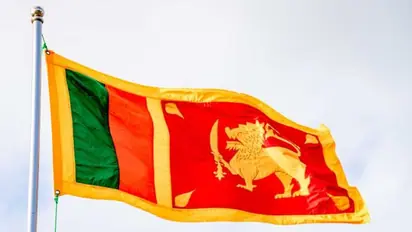Viewpoint: Inflation eases, but Sri Lanka faces complex situation

Synopsis
Analysts emphasize the importance of Sri Lanka enhancing its management of government-owned enterprises and adhering to IMF guidelines concerning energy prices. Neglecting these steps might lead to the resurgence of inflationary pressures, says Pathum Wickramarathne.
Sri Lanka experienced a noticeable drop in its inflation rate, sliding into single-digit territory for the first time in several months this July. Nonetheless, experts are quick to point out potential hurdles arising from escalating prices of necessities such as water, food, and energy. This presents a complex situation for a nation dealing with crises and aspiring to stimulate its economy.
The recent trajectory of inflation has witnessed a substantial reduction. This stands in stark contrast to September of the previous year when inflation soared to a staggering 69%. The current drop can be attributed partly to statistical factors, as well as the strengthening of the nation's currency and improved agricultural outcomes.
Sri Lanka grappled with a severe foreign exchange crisis last year, which served as a catalyst for the surge in inflation. However, recent data disclosed on Monday underscore a different narrative, showcasing a nearly 50% reduction in the core inflation rate, plummeting from 12% in June to 6.3%. Progress has been registered since March, following an infusion of $2.9 billion from the International Monetary Fund (IMF) to address the nation's financial turmoil.
Despite these improvements, experts stress the need for the country to optimize its management of state-owned enterprises and to align with IMF directives regarding energy prices. Failure to do so could potentially rekindle inflationary pressures.
Dimantha Mathew, who leads research efforts at First Capital, highlighted, "The effects of the initial sharp increase in inflation from the previous year will taper off within the next two months. However, thereafter, there's a possibility of a mild inflationary uptick, influenced by currency depreciation and a potential rise in food costs." Mathew added, "The final quarter of the year could introduce some volatility, with inflation possibly settling between 6% to 8% by year-end."
Despite a roughly 10% appreciation of Sri Lanka's currency this year, analysts express concerns that heightened import demand in the latter part of the year could potentially weaken the currency's value again.
Experts have drawn attention to the government's decision to raise water tariffs by up to 50%, coupled with the impact of elevated global commodity prices and drought conditions in regions critical for rice cultivation. These factors collectively could exert upward pressure on prices, analysts contend.
The central bank of the nation remains optimistic about the ongoing downward trajectory. It anticipates the rate to converge within the targeted 4%-6% range, with a potential dip below this threshold over the next two months.
PKG Harischandra, who leads research at the central bank, stated, "In the medium term, our expectations are aligned with inflation stabilizing within the target range of 4%-6%."
Following the swift deflation of inflation, Sri Lanka's central bank embarked on substantial policy rate cuts of 450 basis points during June and July of this year. This corrective action followed a historic surge of 1050 basis points from April 2022 to March.
Harischandra indicated that the central bank intends to persist with its strategy of reducing interest rates during the latter half of the year.
The author is the Chief Editor of News Asia and General Secretary of PEN Sri Lanka. Views expressed are personal
Stay updated with all the latest Business News, including market trends, Share Market News, stock updates, taxation, IPOs, banking, finance, real estate, savings, and investments. Track daily Gold Price changes, updates on DA Hike, and the latest developments on the 8th Pay Commission. Get in-depth analysis, expert opinions, and real-time updates to make informed financial decisions. Download the Asianet News Official App from the Android Play Store and iPhone App Store to stay ahead in business.